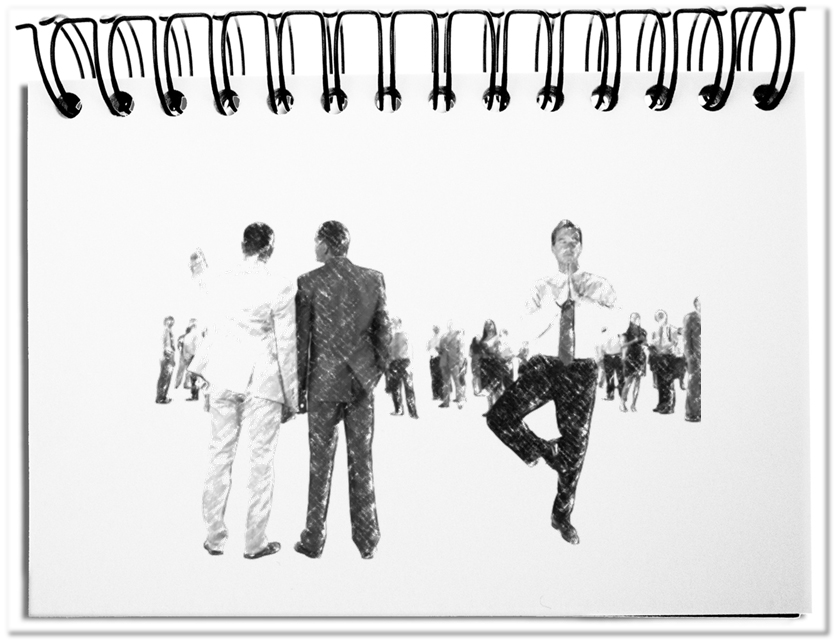The meditative term of mindfulness emerged in the wake of Work Life Balance. This special form of attention is a good approach for minimizing distress at work. In German the obvious consideration of other people and also of the own mental state are hidden behind this term. Together they comprise the external and internal watchfulness.
Executives are more and more required to show sensitively an interest in the needs and desires of their employees, in order to create a supportive work atmosphere. The mindfulness extends this challenge with the look at yourself. Only if you can lead yourself, you can lead others. The two kinds of watchfulness cover your personal scope for action.
- Attention
Attention is the conscious observation of the environment. Empathy, sensitivity and sympathy enable executives to better recognize the inner state of each individual employee. The most important tool is the feedback talk. In this conversation the aspects are located in the center that employees care at most – their tasks, successes, difficulties, annoyances, resentments or desires. Paying attention means to concentrate and examine certain areas, as with a telephoto or a microscope. You put yourself actively into the position of the employees and you find solutions for them. Interests of the enterprise or the bosses or other logical perspectives should be left aside. They would disturb the rare opportunity to show an interest in the employee. Cooperation only functions, if all involved people give themselves mutual attention – then solutions can be found that make everybody happy. - Mindfulness
Mindfulness is the intentional focus on the here and now without any valuations. The most important tool is meditation. This activity needs no special place, no specific time and no defined posture, in order to observe the own perception or to dig into the conditions of your consciousness. It can take place in the office, in a meeting, during a train trip, in an elevator or however. You observe by asking yourself: How does my breathing feels like? How do I feel? What do I think about? What am I doing? What desire do I have right now? By this contemplation you put yourself into the center of the current happening. You discover yourself, as if you perceive the environment with a wide-angle lens. If other people appear in your thoughts, the core questions should be: What do these people release within me? And why? In these extroverted times you lose too often the look at your inner state. In order to take yourself seriously, it is necessary to take care of your mental states – otherwise nobody else does.
In German mindful is a synonym of attentive. This leads to the fact that these two terms are mixed up. At the same time neither the mental states of the others nor the own ones are considered. The results are unconscious conflicts, if everyone does not feel sufficiently considered.
Bottom line: It requires two forms of watchfulness, in order to avoid apparent and unnecessary conflicts. For this purpose it is helpful to pay attention to your environment and to understand, what worries everybody. At the same time you should do a similar approach for yourself by developing sufficient mindfulness and thus to understand your mental states. The interaction of the external and internal watchfulness opens the path for solutions that satisfy others and yourself.

